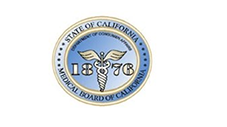VATS Lobectomy
Introduction
Lung cancer is one of the leading causes of cancer deaths. You have a better chance of surviving a lung cancer when your disease is detected in its early stage (stage I) and you undergo a procedure known as lobectomy. Lobectomy is a surgical procedure to remove one of the lobes of the lungs where your affected tissues or tumor are located. Previously, lobectomy used to be performed with an open procedure known as thoracotomy, where your surgeon would make an incision in your chest and spread your ribs apart in order to gain access into your chest cavity and remove your affected tissues. This necessitated a bigger incision and resulted in a longer hospitalization and recovery period.
VATS Lobectomy
Video-assisted thoracic surgery (VATS) lobectomy is a minimally invasive procedure, where your surgeon would make three 1-inch incisions and one 4-inch incision in order to gain access into your chest cavity without spreading your ribs.
During this procedure, your surgeon will insert a long slender tube fitted with a video camera (thoracoscope) and other surgical instruments through the previously placed small incisions. The video camera relays images of your chest cavity/operative site onto a monitor, which guides your surgeon to maneuver the surgical instruments and resect the affected tissues/tumor of your lungs through the small incisions.
Indications
A VATS lobectomy procedure is indicated in:
- Patients with stage I non-small cell lung cancer (a primary tumor that has not spread beyond the lungs and is under 3 cm)
- Patients who have a single enlarging pulmonary nodule
- Patients who need diagnostic or therapeutic procedures performed on the outer area of the lung
Advantages of VATS Lobectomy
- Patients usually experience less pain and have a quicker recovery compared to traditional thoracic surgery technique.
- There is a reduced risk of bleeding and infection as the procedure requires comparatively smaller incisions.
Risks
Some of the possible risks associated with a VATS lobectomy procedure include bleeding, infection, anesthesia complications, air leak in your lungs that does not heal, damage to the adjoining tissues, accumulation of pus in your chest cavity (empyema), and ongoing pain in your chest wall.
Recovery
Your thoracic surgery team will help you recover from your VATS procedure as quickly as possible.
- You will be hospitalized for three to four days following your surgery.
- You will be given pain medications to control your pain.
- You will be instructed on your diet, activity restrictions, and wound care.
- You may return to work in four to six weeks after your surgery.
- You can resume more strenuous activities six to twelve weeks after your surgery.
- You will be recommended a follow-up appointment seven to ten days after your surgery and your progress will be monitored with chest x-rays and wound site assessment.



















